Lesson 6
Lesson 8 Module 2
A Tale of Two Trends
There is a wonderful doctor at Vanderbilt University in Nashville named Stephen Patrick who coined the term “A Tale of Two Trends” when talking about a pregnant woman’s use of opioids and the impact on her unborn child. In other words, when more and more pregnant women use opioids – then more and more fetuses are exposed to opioids. As one trend increases (mother’s use) then another trend increases (fetuses exposed and possibly having issues with withdrawal).
In a newborn baby, withdrawal from opioids is called “Neonatal Abstinence Syndrome” or NAS. It is also sometimes called “Neonatal Withdrawal Syndrome” or NWS. Just to confuse you a bit more: there is a relatively new term for a newborn experiencing withdrawal due to mom’s use of opioids while she is pregnant called “Neonatal Opioid Withdrawal Syndrome” or NOWS. These terms all refer to basically the same thing: a newborn who is struggling with withdrawing from opioids due to mom’s use while pregnant.
Maternal Opioid Use and NAS (8)
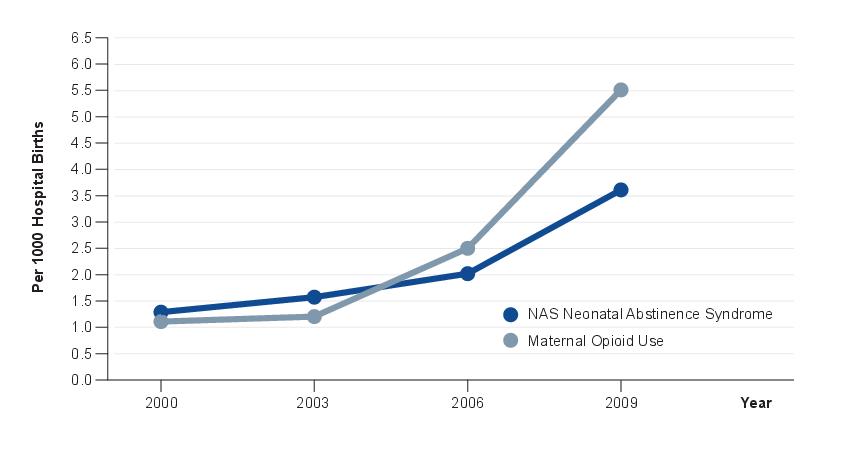

Discuss:
Have you heard anything in the news or social media about NAS?
Neonatal Opioid Withdrawal Syndrome - Signs
There are many signs and symptoms that new parents and healthcare providers need to watch for that are of concern when a newborn experiences withdrawal:
Gastrointestinal (vomiting, diarrhea, stomach cramps, poor feeding) – so lots of tummy problems like vomiting and diarrhea. There is a lot of concern here because the newborn may have difficulty feeding and therefore won’t gain weight properly.
Vasomotor (heart rate, sweating) – so problems with regulating the newborn’s heart rate.
Central Nervous System (hypertonicity, agitation, sleeplessness, tremors, high pitched crying, hiccuping, startling, back arching, hyperactive reflexes) – so issues with excessive crying, being very upset and agitated, very difficult to soothe and calm. The hallmark of neonatal withdrawal is a striking disorder of movement, most aptly termed “jitteriness.”
Excoriation (reddened finger tips, toes, knees) – so problems with the skin, which may become red at the fingertips, toes, and knees. Mottling of the skin; blotchiness.
Respiratory Distress Syndrome (respiratory distress syndrome) – so problems that may make it extremely difficult for the baby to breath properly. This in particular can be life threatening.
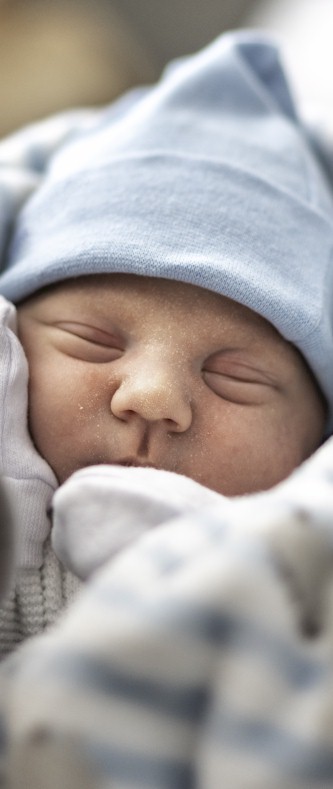
Drugs Other than Opioids can Cause Withdrawal Symptoms
It’s important to understand that there are other drugs that possibly cause withdrawal in a newborn baby besides opioids. Some of these substances, such as caffeine, may simply cause a few minor issues in the newborn. Others such as benzodiazepines or SSRI’s (for example some anti-anxiety or anti-depressant medications) can create significant issues with withdrawal in a newborn.
That’s why it is important to remain as substance free as possible while pregnant, and be honest with your doctor or healthcare provider about what you may or may not be using before, during, and after pregnancy. This is also true for when you are breastfeeding.


Discuss:
Name some other drugs that you think may cause problems in a newborn.
Timing of Symptoms and Resolution
Somewhere between 50-80% of newborns prenatally exposed to opioids will experience withdrawal symptoms. These symptoms will become obvious within one to three days after birth, which can be a problem if the newborn and the mother go home from the hospital before the symptoms occur. There have been more and more reports lately of newborns needing to return to the hospital emergency room because they begin to struggle with symptoms of NOWS after discharge from the hospital.
• Clinically recognizable NOWS occurs in 50-80% of exposed infants (9)
• Typically, withdrawal is apparent within 24-72 hrs or as long as 5-10 days of life (10)
• On average, infants with NAS are hospitalized for an average of 17-23 days (11)
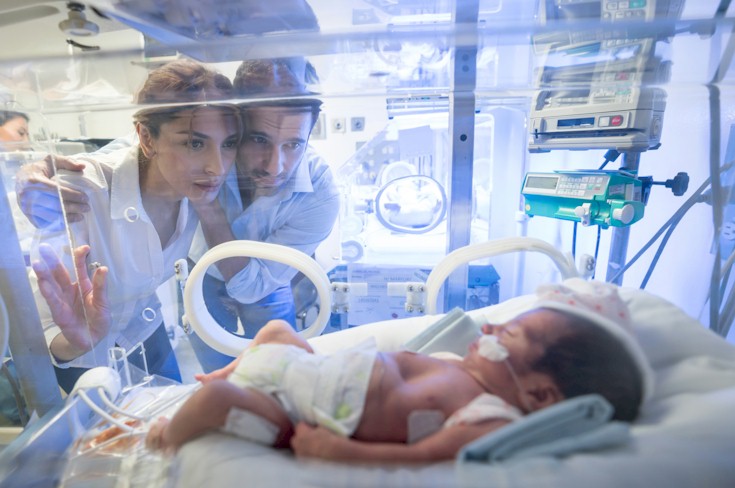

Discuss:
Are you surprised that not all babies exposed to opioids experience NOWS?
NAS Rates by Maternal County of Residence
How big of a problem is opioid use during pregnancy in Georgia? What do the rates of opioid use during pregnancy look like in our state?
The Georgia Department of Public Health (DPH) tracks the number of newborns in our state who have been prenatally exposed to opioids and other drugs. As you can see by this map from DPH, opioid use during pregnancy is a statewide problem. This map is color-coded based on the rates, per county, of babies born prenatally exposed to drug use and then diagnosed with Neonatal Abstinence Syndrome or NAS.
There are 14 counties in Georgia with the highest rates of NAS. The burden of NAS seems particularly high in northeast and northwest corners of our state, and also along the counties that border Alabama.
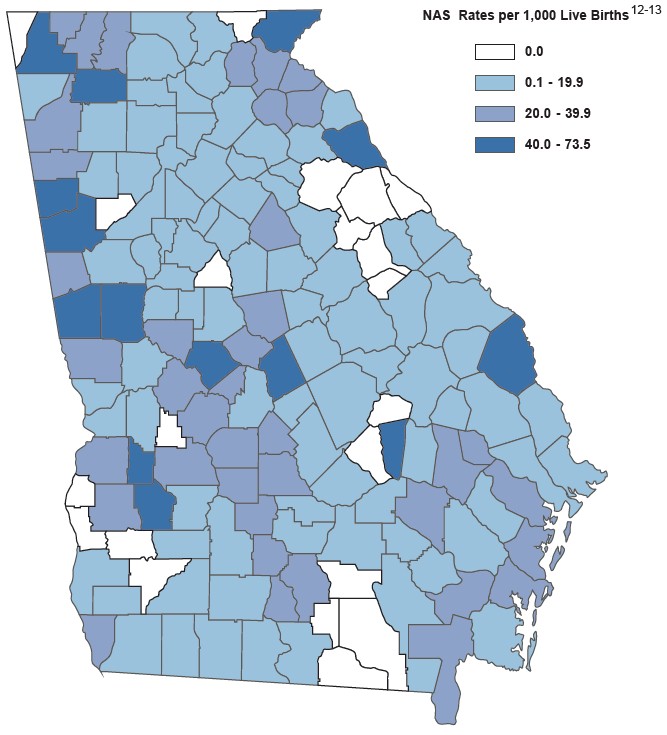
NAS Cases Have Increased Exponentially
The Georgia Department of Public Health began more accurate tracking of NAS rates in our state in 2016. As of 2016, doctors and nurses are required to report suspected cases of NAS to the GA DPH which are then entered into a state database.
As you can see by this graph, the rates of NAS have increased exponentially over the past 10 years and are continuing to climb. Some of the increase in cases is a result of this improved reporting system.
However, the increase in cases is large enough that reporting is not the only reason for the increase we’ve seen.
For this and many other reasons, it is important for young women like you to educate themselves on opioid use during pregnancy and how to stay healthy and drug free.
NAS Cases in Georgia 2007-2017 (13-14)
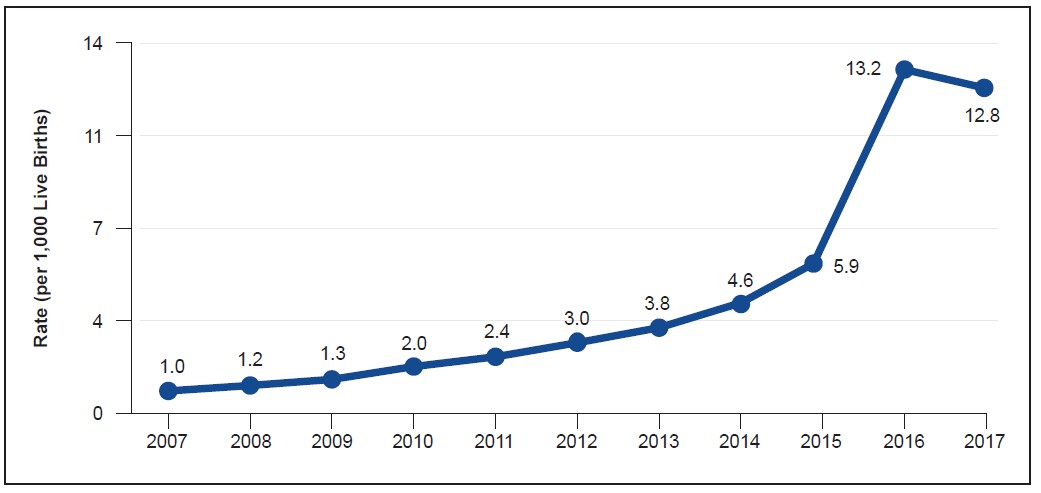
Polysubstance Use
When young women struggle with polysubstance use it may include opioids along with other drugs such as marijuana or stimulants like cocaine and methamphetamine.
This graphic shows the polysubstance use nature of the current opioid epidemic. As the state is collecting information on the numbers of babies born prenatally exposed to opioids, they are also seeing high levels of other drug use in pregnancy.
We will discuss marijuana in more detail later, but look at the high rates of marijuana use in pregnant women in our state. Along with opioids and amphetamines, marijuana is the most commonly used drug among women delivering a baby that is suspected of having been drug exposed.
Toxicology Results for Infants With NAS 2017 (15-16)
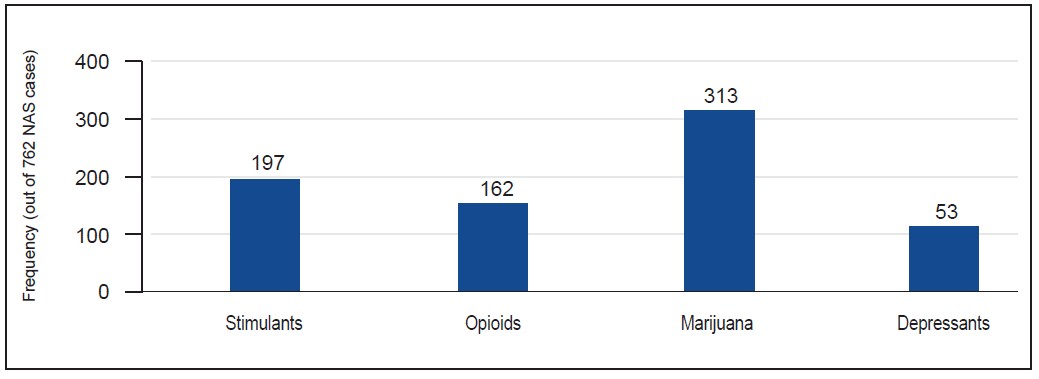

Discuss:
Do these rates surprise you? What do you think may be driving the high rates of marijuana use among pregnant women in our state?
Exposure to Opioids
There are a whole host of opioids that pregnant women in Georgia are using, and therefore creating exposure issues in their newborns. As the Georgia Department of Public Health is gathering information on opioids in pregnancy and Neonatal Abstinence Syndrome, they are also gathering information about the number and types of opioids being used. This pie chart shows continued use by pregnant women is one of the main drivers of our current opioid epidemic. About 20% of mothers and babies testing positive for opioids in Georgia are testing positive for Oxycodone/Oxycontin. Around 70% are testing positive for a whole range of opioids, such as codeine, morphine, meperidine or Darvon, and propoxyphene or Darvocet.
You can also see methadone and buprenorphine on this pie chart, which are both used in medication assisted treatment or MAT. These are prescribed under the care of a doctor to help a woman manage her opioid dependence while pregnant and are an important part of a pregnant woman’s healthcare and recovery. It may seem ironic to treat a pregnant woman struggling with opioid dependence with another opioid, but MAT is the standard of care for some pregnant women working on their opioid recovery.
Although infants born to women being treated with MAT may experience withdrawal symptoms as well, there is increased risk for negative outcomes if a pregnant woman’s substance use disorder
is unmanaged.
Opioids in Pregnancy by Type, Georgia 2016 (17)

Did You Know:
There were so many different types of opioids to be concerned about in pregnancy?
Things to Remember!
We’ve covered a lot of information about opioid use during pregnancy, but remember opioids are often used along with other drugs including alcohol, marijuana, tobacco, and marijuana.
Even though we are focusing on one drug at a time, remember that most young women who are struggling with opioid use before, during, or after pregnancy are probably also struggling with other drug use.
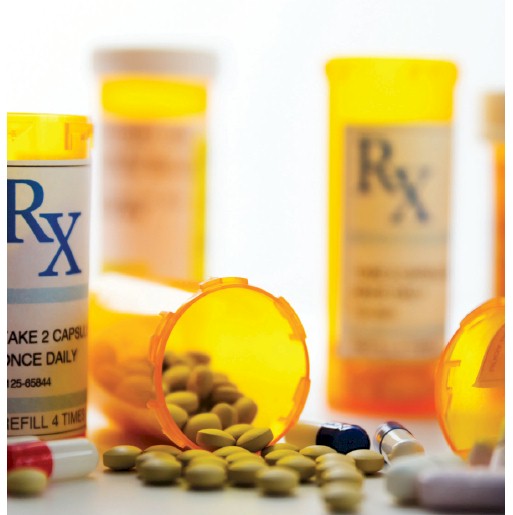
Did You Know:
There is an easy to use nasal spray called Naloxone (also called Narcan) that can reduce an opioid related overdose. Learn more about how to use it by checking out the resource section at the end of this course.